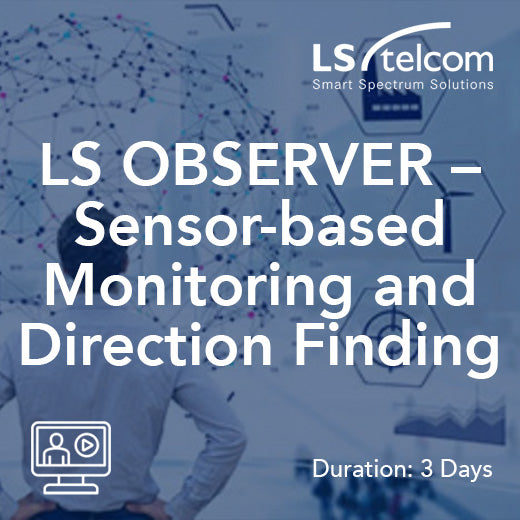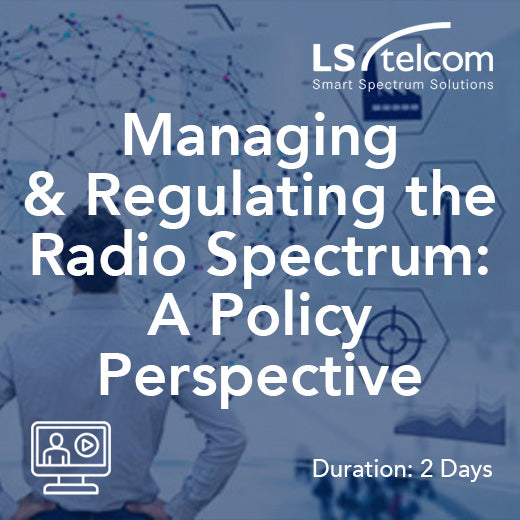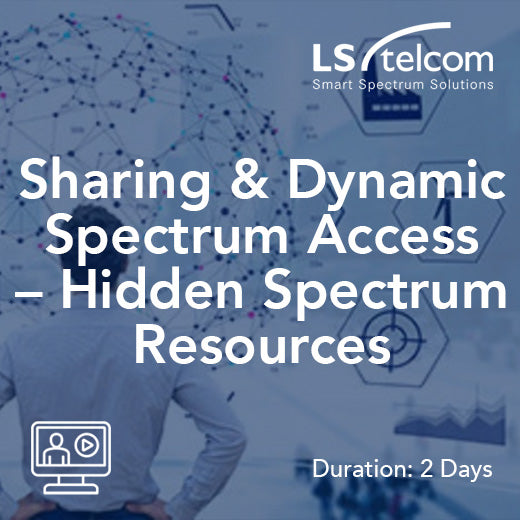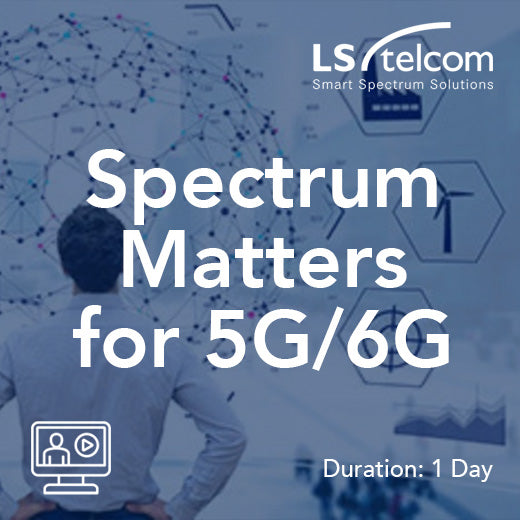Spectrum is a crucial aspect of the telecommunications industry, playing a vital role in the transmission of data, voice, and video over wireless networks. In the ever-evolving landscape of technology, understanding spectrum management and allocation is essential for professionals working in the field of telecommunications.
At Wray Castle Ltd, we offer a comprehensive spectrum training course that covers all aspects of spectrum management, from regulatory frameworks to spectrum planning and optimization. Our course is designed to provide learners with the knowledge and skills needed to effectively navigate the complex world of spectrum, ensuring they are equipped to make informed decisions that drive business success.
Through our spectrum training course, participants will gain a deep understanding of the principles of spectrum management, including spectrum licensing, spectrum auctions, and spectrum sharing. They will learn how to effectively plan and optimize spectrum resources to maximize network performance and capacity, while also ensuring compliance with regulatory requirements.
Our spectrum training course is delivered by industry experts with years of experience in the field, ensuring that participants receive high-quality, up-to-date training that reflects the latest trends and developments in spectrum management. Whether you are a telecommunications professional looking to enhance your skills or a company seeking to upskill your workforce, our spectrum training course is the perfect solution.
By enrolling in our spectrum training course, participants will gain a competitive edge in the telecommunications industry, positioning themselves as valuable assets to their organizations. With our flexible learning options, including live and self-paced courses, virtual labs, and enterprise-centric programs, learners can access the training they need, when they need it.
Don't miss out on the opportunity to enhance your spectrum management skills with Wray Castle Ltd. Enroll in our spectrum training course today and take your career to the next level.
Spectrum Training Courses
-

LS OBSERVER – Sensor-based Monitoring and Direction Finding (LS telcom)
The LS OBSERVER system training introduces the features of the LS OBSERVER based monitoring units and the principles of operation as sensor-based systems. The course contains the detailed description of the operation of all features and allows the participants to perform practical tasks with the LS OBSERVER system. The service-oriented system configuration and architecture, the remote control of measurement units, the measurement data download, multiple geolocation methods, the analysis of measurement results and direction finding techniques will be presented. The participants will have the possibility to use the equipment for practical tasks during the training. Information about maintenance requirements and configuration of the system are also covered by the training. Course Objectives The training enables the participants to become familiar with the LS OBSERVER monitoring units and the associated software module LS OBSERVER CMS. They will understand the functionalities, handling the GUI and learn how to perform measurements and analysis with the focus on remote controlled monitoring, geolocation and direction finding. Finally, they will see how a fully integrated spectrum management (e.g. SPECTRAplus) and monitoring system can be managed and be used for combined tasks (e.g. automatic violation detection). Intended for This course is intended for monitoring personal who have a basic knowledge of radio monitoring and geolocation methods and who need to operate LS OBSERVER units for measurement, direction finding and analysis tasks. Contents Global overview of the LS OBSERVER service-oriented architecture Typical system and network setup and configuration GUI concept and handling Wide-band measurements Fixed frequency measurements Recording of the measurement results Direction Finding AoA measurements Geolocation with TDoA and GROA+® DF Time Travel® AoA combination of TDoA, GROA+® and AoA results Data handling, download from remote monitoring units About LS telcom: LS telcom is a global leader in technologies and consulting services for efficient radio spectrum use, optimizing spectrum management to ensure reliable, interference-free, and secure radio services. Our portfolio includes consulting, measurement services, and integrated solutions for planning, analysis, monitoring, and managing radio infrastructure. Serving customers in over 100 countries, including regulatory authorities, network operators, and industries such as transport, utilities, and security, LS telcom operates globally with subsidiaries and offices in locations like Germany, the UK, Canada, India, and the UAE. Headquartered in Lichtenau, Germany, LS telcom AG has been listed on the German Stock Exchange since 2001 (ISIN DE 0005754402).
£2,600.00
-

Managing and Regulating the Radio Spectrum: A Policy Perspective (LS telcom)
The radio spectrum is a limited resource that has to be shared between different services, technologies, users and countries. It is the task of regulatory authorities to manage the resource and to optimize its use. International frameworks provide the basis for spectrum management, however knowledge of the characteristics of the radio spectrum and technologies that use it are necessary for these frameworks to be translated into realizable policies and practices at a national and regional level. This course provides an overview of the goals of spectrum management as well as delivering an understanding of the specific characteristics of different parts of the radio spectrum and how this impacts its utility and value. The use of different spectrum bands is discussed, together with a consideration of the way in which historic and new radio technologies use spectrum and the techniques being considered to maximize efficiency and sharing. Different facets of spectrum management and regulation are explained. The course explores assignment and planning methods from the classical command and control techniques to developments in economic techniques such as pricing, trading and auctions. It takes a look at techniques such as spectrum sharing and dynamic access and licensed shared access to help understand what failings of existing techniques they are seeking to redress. Course Objectives After completion of the course, participants will understand how the radio spectrum is used, and approaches to its management and regulation with respect to setting certain policies. They will have extended their knowledge of spectrum management and will have been updated on the latest techniques and processes being employed. Intended for This course is ideal for those working in a policy development and technical/non-technical positions within a spectrum regulator or regulatory body. It is useful for those who wish to deepen their knowledge of the toolkit for spectrum regulation and management including consultants, investors, manufacturers, major spectrum users and those for whom managing the spectrum is a part of their daily job. Contents Characteristics of radio spectrum and radio technologies The international framework and processes for spectrum management Translating spectrum characteristics into policy levers Evolution of spectrum assignment approaches Spectrum sharing; a paradigm to innovative spectrum management About LS telcom: LS telcom is a global leader in technologies and consulting services for efficient radio spectrum use, optimizing spectrum management to ensure reliable, interference-free, and secure radio services. Our portfolio includes consulting, measurement services, and integrated solutions for planning, analysis, monitoring, and managing radio infrastructure. Serving customers in over 100 countries, including regulatory authorities, network operators, and industries such as transport, utilities, and security, LS telcom operates globally with subsidiaries and offices in locations like Germany, the UK, Canada, India, and the UAE. Headquartered in Lichtenau, Germany, LS telcom AG has been listed on the German Stock Exchange since 2001 (ISIN DE 0005754402).
£1,300.00
-

Measurements of Human Exposure to RF Electromagnetic Fields (LS telcom)
Radio transmitters produce electromagnetic fields which members of the public may be exposed to. In order to assess people’s safety their exposure must be measured and compared with the appropriate limits. This course will focus on the measurement of general public exposure; in addition, some aspects of occupational exposure are discussed. The lecture will be supported by practical measurements of real-life radio signals by nearby RF transmitters. Course Objectives After completing the training, delegates will be able to perform measurements of RF exposure caused by different radio services which follow the correct measurement methodology, equipment settings and post processing. They will also understand the philosophy behind the exposure limits. Intended for This course is intended for those who have basic knowledge in RF wireless communication techniques and understanding in spectrum analyzer, who are interested in measurement of human exposure to RF electromagnetic fields and who may be employed in regulatory authorities, environmental agencies, radiation protection authorities, health and safety departments of network operators or measurement laboratories. Contents ICNIRP‘s RF exposure limits philosophy Status of current biological research Basic measurement principles Derivation of an appropriate measurement methodology Correct measurements of FM, DAB, DVB-T, GSM, UMTS, LTE, 5G, TETRA, and radar exposures Measurement report and uncertainty budget, typical sources of error Measurement strategies Measurement practice on real-life signals About LS telcom: LS telcom is a global leader in technologies and consulting services for efficient radio spectrum use, optimizing spectrum management to ensure reliable, interference-free, and secure radio services. Our portfolio includes consulting, measurement services, and integrated solutions for planning, analysis, monitoring, and managing radio infrastructure. Serving customers in over 100 countries, including regulatory authorities, network operators, and industries such as transport, utilities, and security, LS telcom operates globally with subsidiaries and offices in locations like Germany, the UK, Canada, India, and the UAE. Headquartered in Lichtenau, Germany, LS telcom AG has been listed on the German Stock Exchange since 2001 (ISIN DE 0005754402).
£2,230.00
-

Measurements of Human Exposure to RF Electromagnetic Fields at 5G NR Base Stations (LS telcom)
The main focus of the workshop is on the measurements and evaluation of high frequency electromagnetic fields generated by 5G Base Stations to ensure compliance with RF exposure safety standards. The workshop is divided in the following blocks. It is mainly aimed at persons regularly working in the field of RF exposure measurement and assessment, e.g. Employees of regulatory and licensing authorities Employees of federal radiation protection authorities, environmental ministries and agencies Occupational safety officers of mobile network operators Personnel of expert offices for the measurement of electromagnetic fields in the context of personal protection. Contents The workshop will focus on the correct determination of the maximum possible radiofrequency fields generated by 5G base stations at the measurement location. In detail, the following topics will be covered: Basics Important differences of 5G systems compared to 4G (LTE) systems. Influence of beamforming antennas on the exposure situation. Challenges for a correct exposure determination at 5G sites with beamforming (mMIMO) antennas. Measurement and Evaluation Measurement of actual 5G field strength level with a spectrum analyzer: Correct setting of the instrument. Possible strategies for the determination of maximum possible exposure. Determination of the maximum RF emission at 5G sites without mMIMO antennas. Determination of the maximum RF emission at 5G sites with mMIMO antennas. Comparison of frequency selective and code selective measurements. Practical demonstration: Code selective measurement of SSS signal. Extrapolation of code-selective measurement results to the situation of maximum radiated power using the antenna patterns of broadcast and traffic beams. Some examples of measurement and extrapolation results at 5G sites. About LS telcom: LS telcom is a global leader in technologies and consulting services for efficient radio spectrum use, optimizing spectrum management to ensure reliable, interference-free, and secure radio services. Our portfolio includes consulting, measurement services, and integrated solutions for planning, analysis, monitoring, and managing radio infrastructure. Serving customers in over 100 countries, including regulatory authorities, network operators, and industries such as transport, utilities, and security, LS telcom operates globally with subsidiaries and offices in locations like Germany, the UK, Canada, India, and the UAE. Headquartered in Lichtenau, Germany, LS telcom AG has been listed on the German Stock Exchange since 2001 (ISIN DE 0005754402).
£810.00
-

Practical Spectrum Monitoring Measurements (LS telcom)
This course gives an introduction to practical spectrum monitoring measurements. Delegates will follow practical examples to illustrate the limitations of spectrum monitoring measurements. During hands-on measurements of the RF environment around our Training Academy in Lichtenau/Germany the delegates will put the learned techniques into practice. Course Objectives After completing the training delegates will be able to perform practical spectrum monitoring measurements under real-life conditions and understand the limitations in the RF field. They will also be able to make estimations of expected measurement results, judging the quality of the measurements performed and planning measurementcampaigns. Intended for Regulatory authorities’ staff members supposed to execute spectrum monitoring measurements. Contents Overview of spectrum monitoring tasks Selecting equipment according to the actual task Distinguishing between real signals and intermodulation products Limitations due to the real-life environment Basic measurements Practical measurement on FM broadcast-/DVB-T-transmitters Basic signal analysis Automatic Violation detection Different usage of homing and direction finding Locating transmitters using different methods (AoA/GRoA+/TDOA) Hints and kinks performing measurements Quality of measurement results Planning measurement campaigns Practical hands-on measurements in the field About LS telcom: LS telcom is a global leader in technologies and consulting services for efficient radio spectrum use, optimizing spectrum management to ensure reliable, interference-free, and secure radio services. Our portfolio includes consulting, measurement services, and integrated solutions for planning, analysis, monitoring, and managing radio infrastructure. Serving customers in over 100 countries, including regulatory authorities, network operators, and industries such as transport, utilities, and security, LS telcom operates globally with subsidiaries and offices in locations like Germany, the UK, Canada, India, and the UAE. Headquartered in Lichtenau, Germany, LS telcom AG has been listed on the German Stock Exchange since 2001 (ISIN DE 0005754402).
£2,220.00
-

Radio Principles (On-Demand)
The world has seen a phenomenal growth in the application and use of radio technology. What haven’t changed, however, are the principles upon which all of these technologies are built.The Radio Principles course provides an in-depth understanding of these principles on which radio technologies are built, taking students on a logical and detailed path through the various aspects of the theory, and practice, of radio communications. Through attendance on this course, delegates will build an understanding of how radio works and how this impacts manufacturers, users and operators of radio technology. Who would benefit Those requiring an understanding of the principles and concepts of radio that underpin today’s radio technologies. Prerequisites Some experience in telecommunications engineering is beneficial but the course is also suitable for delegates with an aptitude for technical subjects. Topic Areas Include The use and management of the radio spectrum Waveform fundamentals and baseband information Power levels and measurementsAnalogue and digital modulation techniques Simplex, semi-duplex and duplex - FDD and TDD Multiplexing – FDMA, TDMA, CDMA and OFDMA Transmitters and receivers Antennas and transmission lines Radio propagation mechanisms Introduction to coverage prediction Principles of cellular coverage techniques Diversity and MIMO An overview of fixed and mobile radio technologies in use today
£2,660.00
-

Sharing and Dynamic Spectrum Access – Hidden Spectrum Resources (LS telcom)
The planning rules for radio services often leave small gaps which cannot be used or the scattered use of spectrum by a primary user leaves larger opportunities. Such spectrum might be accessible for different or additional radio services, typically ones with very low power which will not cause undue interference to the primary users. These opportunities were referred to as ‘whitespaces’ but the focus more recently considers methods such as dynamic spectrum assignment. In addition, regulatory techniques are trying to find ways to make sharing spectrum a more common practice for use across a myriad of spectrum services. This course examines the background to whitespaces, considering how and where they arise and looks at a range of sharing opportunities. It then focuses on how spectrum might be made available to additional parties, and what kind of communications it might support. Finally, the various regulatory methods and technologies (including DSA/LSA and the role of databases) being considered will be examined. Course Objectives After completing the course, delegates will understand the history of whitespaces, and the more recent opportunities for sharing together with methods to regulate usage. Current developments and case studies will also be provided. Intended for those who need to understand the regulation and practical application of advanced sharing techniques, whether from a regulatory or commercial perspective. Contents The possible applications for more advanced spectrum sharing methods Technologies being developed for the exploitation spectrum sharing Where are there opportunities for more advanced sharing? How is interference dealt with The regulatory processes and procedures being applied Geographic databases and dynamic spectrum access Licensed shared access and similar regulatory tools About LS telcom: LS telcom is a global leader in technologies and consulting services for efficient radio spectrum use, optimizing spectrum management to ensure reliable, interference-free, and secure radio services. Our portfolio includes consulting, measurement services, and integrated solutions for planning, analysis, monitoring, and managing radio infrastructure. Serving customers in over 100 countries, including regulatory authorities, network operators, and industries such as transport, utilities, and security, LS telcom operates globally with subsidiaries and offices in locations like Germany, the UK, Canada, India, and the UAE. Headquartered in Lichtenau, Germany, LS telcom AG has been listed on the German Stock Exchange since 2001 (ISIN DE 0005754402).
£1,300.00
-

Spectrum Matters for 5G/6G (LS telcom)
5G is driven both by the need for mobile operators to continuously strive to satisfy the growing and unquestionable demand for mobile data, and to support new use cases and services. Regulators and governments have been involved in establishing policies and approaches to award spectrum, so that new 5G services can be rolled out to consumers, enterprises, public sector and government agencies alike. Questions remain about how much more spectrum is needed for 5G but also for what spectrum is needed for 6G which is due for commercialization in the early 2030’s. When it comes to the question of spectrum however, there are many different views about how growth in data traffic impacts upon demand for radio spectrum. It is also evident that below 6 GHz there is very little spectrum remaining that can be re-farmed for mobile services and much of the focus for new spectrum for future mobile (6G) services is concentrated above 6 GHz. How feasible is it to deliver mobile services at such high frequencies? Are there ways to use existing spectrum more efficiently, or are technologies such as LTE and 5G Advanced already very close to the limit of what is achievable? Course Objectives After completing the course, participants will have an understanding of how the evolution towards new standard cellular technologies 5G and 6G has meant identifying new spectrum, or at least one new band. Participants will also understand the practical utilization of ever increasing frequencies in a mobile environment, and whether 6G might mark the end to the hunger of mobile operators for more spectrum. Intended for Those who need to better understand the spectrum implications of 5G and 6G technologies, whether from a regulatory, commercial or technical perspective. Contents Forecasts of demand for data services Realistically forecasting spectrum demand Bands capabilities and issues with existing IMT bands New bands being considered for 5G and 6G services Propagation and coverage of bands above 6 GHz The spectrum efficiency of existing IMT technologies The 5G ecosystem A roadmap for the evolution of 5G services towards 6G Authorization of mobile spectrum About LS telcom: LS telcom is a global leader in technologies and consulting services for efficient radio spectrum use, optimizing spectrum management to ensure reliable, interference-free, and secure radio services. Our portfolio includes consulting, measurement services, and integrated solutions for planning, analysis, monitoring, and managing radio infrastructure. Serving customers in over 100 countries, including regulatory authorities, network operators, and industries such as transport, utilities, and security, LS telcom operates globally with subsidiaries and offices in locations like Germany, the UK, Canada, India, and the UAE. Headquartered in Lichtenau, Germany, LS telcom AG has been listed on the German Stock Exchange since 2001 (ISIN DE 0005754402).
£1,300.00
-

Spectrum Monitoring - Measurements and Techniques (LS telcom)
This course is based on the latest ITU-R and CEPT recommendations, reports and handbooks and provides an introduction into the most common spectrum monitoring and measurements techniques. It is also presented theoretical background and practical examples that help in understanding specifics of administrative radio monitoring. The training concludes with number of practical examples. Course Objectives After the training, the participants will be able to understand standards, the procedures and methods of the most common monitoring measurements, to distinguish between different measurements technologies, to respect technical limitations of measurement equipment, to present results to different user groups on a simple way. Intended for This course is intended for those who have a basic knowledge of radio communications and electromagnetic wave propagation, who are interested in spectrum monitoring measurement and techniques and who may be employed in regulatory authorities that supposed to execute spectrum monitoring measurements, reporting and providing early warnings to policy makers. Contents General expectations of spectrum monitoring Utilization of radio monitoring results Manual monitoring (ITU/ECC references, proposed procedure) Channel & band occupancy (ITU R1, ERO/ECC) Monitoring of broadcast and digitally modulated signals Interference description, detection, reporting Analysis of results and reporting Automated monitoring Detection of regulatory unauthorized utilizations Inspection/certification/technical acceptance Real time radio occupancy monitoring (for utilizing of whitespace) General license compatibility monitoring (like SRD/ISM/WiFi) Monitoring of assignments (like cellular access systems or MMDS) Areal monitoring (geolocation of low power sources) Interpretation of results and publishing (what, why and when to publish) About LS telcom: LS telcom is a global leader in technologies and consulting services for efficient radio spectrum use, optimizing spectrum management to ensure reliable, interference-free, and secure radio services. Our portfolio includes consulting, measurement services, and integrated solutions for planning, analysis, monitoring, and managing radio infrastructure. Serving customers in over 100 countries, including regulatory authorities, network operators, and industries such as transport, utilities, and security, LS telcom operates globally with subsidiaries and offices in locations like Germany, the UK, Canada, India, and the UAE. Headquartered in Lichtenau, Germany, LS telcom AG has been listed on the German Stock Exchange since 2001 (ISIN DE 0005754402).
£1,300.00
-

Technical Issues in Radio Spectrum Management (LS telcom)
At its heart, radio spectrum management is essentially a technical discipline, overlaid by strategic and economic considerations. One of the main technical goals of spectrum management is to control interference between radio users so as to optimize the use of the spectrum. Controlling interference is not straightforward and requires the balancing of many factors and undertaking this balancing act requires expert skills. This course describes the necessary theoretical, practical and physical qualities of the radio spectrum including the specifics of wave propagation. Following a review of technical fundamentals such as modulation, antennas and propagation modeling, the course considers the characteristics of different parts of the radio spectrum, and examines in detail the different uses to which it is put. The course then discusses why specific uses are often associated with particular radio frequencies and reviews the technical capabilities and limitations of today’s RF technologies. Interference mechanisms and coordination procedures are explored, together with an understanding of how the performance of radio equipment affects interference and coverage. Finally, detailed explanations of the specifics of the most common radio communication services including broadcast, land mobile, fixed and satellite services are given. Course Objectives After completing the course, participants will have a full understanding of the technical and physical issues which impact spectrum management. In addition, they will have deepened their technical knowledge of different radio services and will understand the principles behind controlling interference and the coordination procedures. Intended for This course is intended for those interested in the technical aspects of spectrum management. This includes those working in a technical function at regulators as well as in telecommunications and broadcasting companies and in organizations with a need for strong technical knowledge. Contents Communication principles, modulation techniques and antennas Radio wave propagation, terrain data and propagation calculations Characteristics and use of the radio spectrum from ELF to EHF Detailed exploration of a range of radio communication services: Technical characteristics, service planning Frequency assignment, coordination procedures About LS telcom: LS telcom is a global leader in technologies and consulting services for efficient radio spectrum use, optimizing spectrum management to ensure reliable, interference-free, and secure radio services. Our portfolio includes consulting, measurement services, and integrated solutions for planning, analysis, monitoring, and managing radio infrastructure. Serving customers in over 100 countries, including regulatory authorities, network operators, and industries such as transport, utilities, and security, LS telcom operates globally with subsidiaries and offices in locations like Germany, the UK, Canada, India, and the UAE. Headquartered in Lichtenau, Germany, LS telcom AG has been listed on the German Stock Exchange since 2001 (ISIN DE 0005754402).
£2,600.00
-

Wray Castle Industry Primers Collection
The Wray Castle Industry Primer collection gives you unlimited access to our growing library of short, focused online training courses. Get upskilled on your chosen topics in just 3 hours with our collection of new short online primers. Our primers cover the key technology and business topics shaping the industry today and tomorrow. You'll benefit from videos, illustrated course books, dedicated tutor support, and regular assessments and earn digital badges to showcase your achievements. A subscription gives you access to all the existing primers below plus all future primers as and when they are published, so you'll always stay ahead of the latest developments across the industry.
£450.00
-

Wray Castle Learning Account
Upskill your workforce with flexible, scalable training solutions The Wray Castle Learning Account offers a flexible, scalable training solution for organizations, enabling upfront budgeting, tailored programs, and comprehensive reporting. Key Features Customised Programmes - Work directly with us to build training programmes tailored to your organization's needs, ensuring budget safety and scalable delivery. Wide Course Variety - Access live sessions, live virtual training, e-learning modules, private team workshops, and expert consultancy services. Upfront Planning - Allocate funds in advance, plan training strategically, align with organizational goals, and gain comprehensive reporting on spend and consumption. Programme Benefits Budget Control & Safety - Maintain complete oversight of training expenditure with upfront allocation. Strategic Alignment - Plan training initiatives with competency assessment options to meet organizational goals. Additional Resources - Access webinars, primers, and supplementary learning materials. Visibility & Reporting - Comprehensive tracking and reporting on training consumption and ROI. Broad Topic Coverage - Wide range of subject areas to address diverse training needs. Simplified Invoicing - VAT invoicing and payment via Purchase Order for streamlined procurement. The Wray Castle Learning Account is ideal for: Organizations seeking to centralize training and budgets. Teams with predictable training spend looking for simplified invoicing and reporting. Organizations requiring scalable training solutions for growing teams L&D and Training Managers who need to demonstrate clear ROI. Ready to transform your training contact us today?
POA: Private Course

























